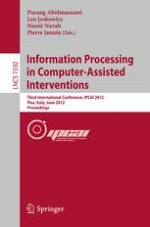2012 | Book
Information Processing in Computer-Assisted Interventions
Third International Conference, IPCAI 2012, Pisa, Italy, June 27, 2012. Proceedings
Editors: Purang Abolmaesumi, Leo Joskowicz, Nassir Navab, Pierre Jannin
Publisher: Springer Berlin Heidelberg
Book Series : Lecture Notes in Computer Science
